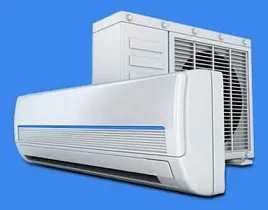
The last six months have been challenging for the industry. The COVID-19 pandemic has caused trading halts in parts of the world and disrupted global supply chains.
BSRIA has interviewed key HVAC manufacturers and distributors in 20 major world markets to report on the effects of Covid-19 in the first half of the year. We have consequently revised sales predictions for 2020 and 2021 on individual markets for key products such as splits, VRF, rooftops and chillers.
This new data has been included in the latest update of our Global AC market study published in September 2020. It provides the most up-to-date assessment of the global AC market performance for 2020 and expectations for the five years ahead.
Supply chain and production were disrupted across the world in the first six months of the year due to pandemic-related lockdowns. Chinese manufacturers closed their factories and shipments of goods came to a halt for several months.
Not all countries have been impacted in the same time and not all products have been impacted in the same way. Whilst most countries took a serious sales dive in the second quarter of the year, China has experienced sharp sales decline in the first quarter of the 2020 and a gradual recovery from April on. With many people working work from home following Government advice, opportunities were created in the AC residential market, as consumers in many cases invested money saved on transport and leisure activities into having air conditioning installed over the summer. This was especially noted in Europe.
Such attitudes have softened the blow and, as with other consumer products, online sales of residential AC products have increased sharply.
The light commercial markets with dominating retail outlets, cafés & restaurants, hotels and other leisure facilities applications have been hit hardest. Typical products that are installed in these applications are large splits (>5kW) and VRF units.
The sales fall in the hospitality industry was partly offset by the increased demand from buildings repurposed for healthcare premises, where VRFs with DOAS (Dedicated Outdoor Air System) were being installed to meet the required ventilation demand.
Nowadays a growing demand for those is observed coming from offices where, alongside implementing a safe working environment, there is a need to review the air quality and ensure sufficient fresh air in-take.
Growth also came from the warehouses sector as the need for them grew in line with increasing on-line sales.
In some countries government stimulus includes investments in education sector, additionally supporting the market.
Overall, products mostly installed in medium to large non-residential projects have taken a deeper sales dive as such projects have often been disrupted by site closures, interrupted supply chains and social distancing rules as well as absenteeism of migrant workers. Under the current economic climate, a significant number of projects were also postponed or put on hold according to the HVAC manufacturers.
Although, the pandemic has created challenges to HVAC companies, new opportunities have also opened. In residential and non-residential applications there is a strong focus on further improvements in indoor air quality. It has created a particularly high demand for products which can self-clean, ventilate and offer air purification. Many manufacturers have launched new product lines to meet the demand and going forward this is expected to become a trend.
In commercial applications, especially those with DX systems, the introduction of higher air volume is introduced with DOAS, zoning, filtration of recycled air and cleaning air ducts to reduce the risk of cross infection in buildings. There is also a greater need for sensors and controls which are integrated to BACS systems to monitor the air quality and report on issues on any failing equipment.
Although there are many products, solutions and software in the market to achieve optimum IAQ, there is no market data which looks at the whole market. BSRIA’s World Market Intelligence team is currently working to launch a brand-new study in this area.